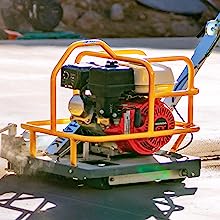In the world of construction and fabrication, precision and expertise are the hallmarks of exceptional work. When it comes to cutting materials like concrete, metal, or wood, going beyond the basics and mastering advanced cutting techniques can elevate your craftsmanship to a whole new level. This blog delves into some advanced cutting techniques that empower you to achieve precise, intricate, and professional results in your projects.
1. Laser-Guided Cutting for Precision
Laser-guided cutting is a sophisticated technique that utilizes laser technology to guide the cutting process with pinpoint accuracy. Laser beams create a visible cutting path on the material, allowing operators to follow the line with utmost precision. This technique is particularly valuable for intricate designs, curves, and patterns where traditional methods might fall short. Laser-guided cutting is commonly used in industries like metal fabrication, sign making, and architectural detailing.
2. Waterjet Cutting for Versatility
Waterjet cutting is a versatile and environmentally friendly technique that uses a high-pressure stream of water mixed with abrasive materials to cut through various materials. This method is highly effective for cutting materials like metal, stone, glass, and even composite materials. Waterjet cutting allows for intricate designs, sharp corners, and precise contours without generating heat, making it ideal for materials that are sensitive to temperature changes.
3. Plasma Cutting for High-Speed Precision
Plasma cutting is a high-speed cutting technique that uses ionized gas (plasma) to melt and remove material. It's commonly used for cutting metals like steel, aluminum, and copper. Plasma cutting offers speed and precision, making it suitable for industrial applications that require efficient and accurate cuts. Advanced plasma cutting systems can achieve intricate shapes and be controlled by computer numerical control (CNC) for automated precision.
4. Ultrasonic Cutting for Delicate Materials
Ultrasonic cutting utilizes high-frequency vibrations to cut through materials. This technique is particularly effective for delicate materials that are prone to deformation, such as food, foam, textiles, and plastics. The ultrasonic vibrations create clean and precise cuts while minimizing friction and heat generation. Ultrasonic cutting is widely used in industries such as food processing, packaging, and textile manufacturing.
5. CNC Cutting for Automation and Complexity
Computer numerical control (CNC) cutting involves automated machines that follow programmed instructions to perform precise cuts. CNC cutting is versatile and can be used with various cutting tools, including lasers, waterjets, plasma, and more. This technique is especially valuable for projects that require intricate designs, repetitive cuts, and complex shapes. CNC cutting ensures consistent results and reduces the margin of error.
6. Advanced Angle Cutting for Joinery
Advanced angle cutting techniques are essential for joinery and woodworking projects that involve intricate connections. Techniques such as compound miter cuts, bevel cuts, and dado cuts enable precise fitting of pieces to create strong and seamless joints. These techniques are particularly valuable for cabinetry, furniture making, and architectural woodwork.
7. Multi-Axis Cutting for 3D Projects
Multi-axis cutting involves machines that can move in multiple directions to achieve three-dimensional cuts. This technique is used in industries like aerospace, automotive, and sculpture. Multi-axis cutting allows for intricate 3D shapes and complex contours that traditional cutting methods cannot achieve.
Mastering advanced cutting techniques goes beyond the ordinary and empowers you to achieve exceptional results in your projects. Whether you're working with concrete, metal, wood, or other materials, exploring and implementing advanced cutting techniques can significantly enhance your craftsmanship, efficiency, and the range of projects you can tackle. As technology continues to evolve, these techniques showcase the synergy of innovation and expertise in the world of construction and fabrication.










